#Agricultural Robots Market
Explore tagged Tumblr posts
Text
The Agricultural Robots market report analyzes the market on the basis of global economic situations, regional geopolitics, import-export scenarios, trade duties, market developments, organic and inorganic strategies, mergers and acquisitions, product launches, government policies, new capacity addition, technological advancements, R&D investments, and new market entry, replacement rates, penetration rates, installed base/fleet size, global and regional production capacity, among others.
0 notes
Link
#pioneering marketdigits consulting and advisory private limited#agriculture robots market#agriculture robots market size#agriculture robots market cagr#smart agriculture market
0 notes
Text
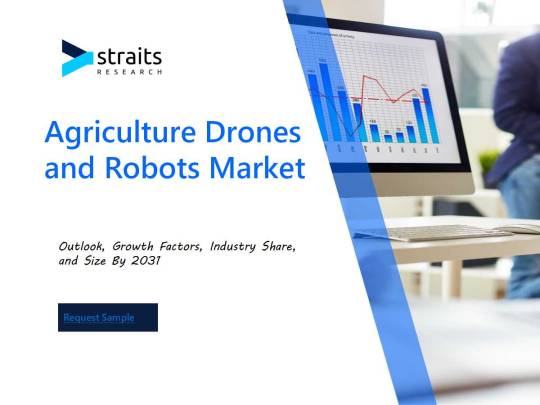
#Agriculture Drones and Robots Market#Agriculture Drones and Robots Market Share#Agriculture Drones and Robots Market Size#Agriculture Drones and Robots Market Research#Agriculture Drones and Robots Industry#What is Agriculture Drones and Robots?
0 notes
Text

Agriculture Autonomous Robots Market: A Global and Regional Analysis | BIS Research
According to BIS Research, the global agriculture autonomous robots market was valued at $828.4 million in 2022, and it is expected to grow with a CAGR of 25.12% during the forecast period to reach $3,136.7 million by 2028.
#Agriculture Autonomous Robots Market#Agriculture Autonomous Robots Industry#Agriculture Autonomous Robots Market CAGR#Agriculture Autonomous Robots Market Size#Agriculture#BIS Research#Agriculture Autonomous Robots Market Report#Agriculture Autonomous Robots Market Research
1 note
·
View note
Text
Vietnam Agriculture Drones and Robots Market Growth, Analysis, Report 2023-2030
BlueWeave Consulting, a leading strategic consulting and market research firm, in its recent study, estimated the Vietnam Agriculture Drones and Robots Market size by value at USD 247.29 million in 2023. During the forecast period between 2024 and 2030, BlueWeave expects the Vietnam Agriculture Drones and Robots Market size to expand at a CAGR of 4.76% reaching a value of USD 363.7 million by 2030. The surge in the Vietnam Agriculture Drones and Robots Market is fueled by escalating demand spurred by applications in animal farming, crop production, field mapping, and more, both domestically and globally. Noteworthy insights in the report shed light on profitable opportunities in the country's market. It provides comprehensive coverage of cost analysis, market segments, prevailing trends, regional dynamics, and the commercial trajectory of key players worldwide, shaping the market landscape. Further, the report incorporates a forecast period from 2023 to 2030, integrating factors like product pricing, market penetration, GDP, consumer behavior, and geopolitical influences. With meticulous segmentation, it offers an exhaustive examination, guiding market players toward informed decisions. Industry giants' strategies and impactful events further enrich the report, making it indispensable for stakeholders navigating the burgeoning sector.
By volume, BlueWeave estimated the Vietnam Agriculture Drones and Robots Market size at 2.2 thousand units in 2023. During the forecast period between 2024 and 2030, BlueWeave expects the Vietnam Agriculture Drones and Robots Market size to expand at a CAGR of 3.51% reaching a volume of 2.8 thousand units by 2030. The Vietnam Agriculture Drones and Robots Market is experiencing rapid growth driven by several factors. Firstly, the increasing adoption of precision agriculture techniques to enhance productivity and reduce labor costs propels demand. Key players like DJI and Yamaha are pioneering innovative drone technologies tailored for agricultural use, offering solutions for crop monitoring and spraying. Additionally, government initiatives promoting modernization in agriculture bolster market expansion. Notable events like the Vietnam International Agricultural Exhibition showcase the latest advancements, attracting both local and international players. With the market poised for exponential growth, companies like XAG and SenseFly are poised to capitalize on emerging opportunities, driving further innovation and competition.
Opportunity – Development of affordable drones
The burgeoning market for agriculture drones and robots in Vietnam is experiencing a significant boost attributed to the development of affordable drone technology. As the cost of drones decreases, farmers across Vietnam find it increasingly feasible to adopt these innovative tools for precision agriculture. Affordable drones offer farmers the opportunity to optimize crop monitoring, pest control, and irrigation management, ultimately enhancing agricultural productivity and sustainability. This trend not only fosters modernization within the agricultural sector but also drives economic growth and competitiveness, positioning Vietnam as a key player in the global agri-tech market.
Sample Request @ https://www.blueweaveconsulting.com/report/vietnam-agriculture-drones-and-robots-market/report-sample
Impact of Escalating Geopolitical Tensions on Vietnam Agriculture Drones and Robots Market
Escalating geopolitical tensions can significantly impact the Vietnam Agriculture Drones and Robots Market. The sector heavily relies on international trade for technology components and market expansion. Tensions may disrupt supply chains, leading to shortages of essential parts, hindering production and innovation. Moreover, heightened geopolitical risks can deter foreign investment, slowing down market growth and technology adoption. For instance, recent tensions in the South China Sea have raised concerns over maritime trade routes vital for Vietnam's imports and exports. Such uncertainties can prompt local farmers and businesses to delay or reconsider investments in agriculture drones and robots. Overall, escalating geopolitical tensions introduce volatility and challenges to the Vietnam Agriculture Drones and Robots Market, potentially impeding its development and economic contributions.
Vietnam Agriculture Drones and Robots Market
Segmental Coverage
Vietnam Agriculture Drones and Robots Market – By Drone Type
Based on drone type, Vietnam Agriculture Drones and Robots Market is divided into Fixed Wing and Rotary Wing segments. The rotary wing segment is a larger drone type, which represents a significant portion of the market share. Rotary-wing drones, known for their versatility and ability to maneuver in tight spaces, are widely utilized in various agricultural applications such as crop monitoring, spraying, and mapping. The segment's dominance underscores the preference for agile and adaptable aerial solutions in Vietnam's agricultural sector, showcasing the demand for technology-driven approaches to farming practices aimed at improving efficiency and productivity.
Vietnam Agriculture Drones and Robots Market – By Robot Type
Based on robot type, Vietnam Agriculture Drones and Robots Market is divided into Crop Harvesting Robots, Weeding Robots, and Milking Robots segments. The crop harvesting robots segment is the largest in the Vietnam Agriculture Drones and Robots Market. The segment likely encompasses technologies and machinery designed to automate and enhance the harvesting process, improving efficiency and productivity in agricultural activities. With Vietnam's significant reliance on agriculture as a cornerstone of its economy, the demand for advanced technologies like crop harvesting robots is likely to be substantial, driving growth and innovation in the particular segment of the market.
Competitive Landscape
Vietnam Agriculture Drones and Robots Market is fiercely competitive. Major companies in the market include DJI Việt Nam, XAG Mekong, Hogitech Co., Ltd, Huida Tech, AGCO, John Deere, AgEagle Aerial Systems, Yamaha Robotics, MAJ Vietnam, and AgriDrone. These companies use various strategies, including increasing investments in their R&D activities, mergers, and acquisitions, joint ventures, collaborations, licensing agreements, and new product and service releases to further strengthen their position in the Vietnam Agriculture Drones and Robots Market.
Contact Us:
BlueWeave Consulting & Research Pvt. Ltd
+1 866 658 6826 | +1 425 320 4776 | +44 1865 60 0662
0 notes
Text
#United Arab Emirates Agriculture Drones and Robots Market#Market Size#Market Share#Market Trends#Market Analysis#Industry Survey#Market Demand#Top Major Key Player#Market Estimate#Market Segments#Industry Data
0 notes
Text
Cultivating Innovation: An In-Depth Analysis of the Robotics in Agriculture Market
Unearthing the World of Agri-Robotics
Agri-robotics involves the use of autonomous or remote-controlled robots and drones to perform a wide range of tasks in agriculture. Robotics in Agriculture Market Analysis These tasks include planting, harvesting, weeding, pest control, and monitoring crop health.
The Significance of Agri-Robotics
Efficiency: Robots can work tirelessly and with high precision, completing tasks in less time and with reduced labor costs.
Precision Agriculture: Agri-robots allow for precise planting, fertilization, and irrigation, optimizing resource use.
Sustainability: Robotics can lead to reduced pesticide and fertilizer use, making agriculture more environmentally friendly.
Data-Driven Decisions: Robots equipped with sensors provide real-time data on crop conditions, enabling better decision-making.
Labor Shortages: In regions facing labor shortages, agri-robots fill critical gaps in the workforce.
The Growing Agri-Robotics Market
The agri-robotics market has experienced significant growth for various reasons:
Technology Advancements: Advancements in artificial intelligence, machine learning, and sensors have made agri-robots more capable and cost-effective.
Global Food Demand: The increasing global population requires more food production, making efficient farming methods crucial.
Sustainability Goals: Robotics align with sustainability goals by reducing the environmental impact of farming.
Investment and Research: Governments and private companies are investing in agri-robotics research and development.
Weather Variability: Agri-robots can help manage the impact of climate change and unpredictable weather patterns.
Recent Trends in Agri-Robotics
Autonomous Tractors: Autonomous tractors can perform various tasks, including planting and harvesting, without human intervention.
Drone Surveillance: Drones equipped with cameras and sensors monitor crop health and detect issues like disease and pests.
Weeding Robots: Robots are designed to identify and remove weeds, reducing the need for herbicides.
Robot Swarms: Multiple small robots can work collaboratively to perform tasks like seeding and data collection.
AI-Driven Farming: Artificial intelligence is used to analyze data and make recommendations for optimized farming practices.
Impact on Agriculture
Agri-robotics is transforming agriculture in several significant ways:
Increased Productivity: Robots can work around the clock, increasing the productivity of farms and reducing the need for manual labor.
Resource Efficiency: Precision agriculture reduces resource waste, making farming more sustainable.
Reduced Environmental Impact: Agri-robots reduce the need for chemicals and pesticides, benefiting the environment.
Data-Driven Decisions: Real-time data from agri-robots allow farmers to make informed decisions about crop management.
Mitigation of Labor Shortages: Agri-robots address the challenge of labor shortages in agriculture.
0 notes
Text
Agriculture Robots Market: Key Factors behind Market’s Rapid Growth
According to a research report "Agriculture Robots Market by Type (Unmanned Aerial Vehicles/Drones, Milking Robots, Driverless Tractors, Automated Harvesting Systems), Farming Environment (Indoor and Outdoor), End-use Application and Region - Global Forecast to 2028" published by MarketsandMarkets, the Agriculture Robots market is estimated at USD 13.5 billion in 2023 and is projected to reach USD 40.1 billion by 2028, at a CAGR of 24.3% from 2023 to 2028. The agriculture robots market is experiencing robust growth and is poised to revolutionize the farming industry worldwide. With a growing need to address challenges like labor shortages, increasing demand for food, and the necessity for sustainable agricultural practices, the adoption of agriculture robots has gained significant momentum.
The market scenario for agriculture robots is witnessing a steady increase in investments from both established companies and startups. Major players in the robotics industry are actively developing advanced robotic solutions tailored for various agricultural tasks. Additionally, governments and agricultural organizations are also encouraging the adoption of these technologies by providing subsidies and incentives to farmers. The market growth can be attributed to several factors. Firstly, the increasing trend of precision agriculture, driven by data-driven farming practices, is fueling the demand for robots equipped with advanced sensors and AI capabilities.
Download PDF Brochure: https://www.marketsandmarkets.com/pdfdownloadNew.asp?id=173601759
These robots enable farmers to optimize resource usage, leading to improved productivity and reduced costs. Secondly, the rising awareness of sustainability and environmental concerns is driving the need for more efficient and eco-friendly farming methods. Agriculture robots offer precise application of inputs like fertilizers and pesticides, minimizing wastage and environmental impact. As the industry matures and technology becomes more accessible, the cost of agriculture robots is likely to decrease, further encouraging adoption among farmers of all scales. The agriculture robots market is expected to continue its growth trajectory, transforming the global farming landscape and contributing to a more sustainable and productive future for agriculture.
North America is expected to account for the largest market share in 2023.
The agriculture robots market in North America is witnessing rapid growth, driven by various factors that are shaping the industry and encouraging the widespread adoption of robotic technologies in farming practices. North America is experiencing a decline in the availability of agricultural labor due to factors like urbanization and changing demographics. As labor costs rise, farmers are turning to agriculture robots to automate repetitive and labor-intensive tasks, reducing their dependency on human workers and mitigating the impact of labor shortages. The region is at the forefront of technological innovation, and the integration of advanced technologies like artificial intelligence, machine learning, and IoT (Internet of Things) has significantly enhanced the capabilities of agriculture robots. These cutting-edge technologies enable robots to make data-driven decisions, perform precise operations, and optimize farming practices, leading to increased efficiency and productivity. The presence of leading research institutions and companies dedicated to robotics and agriculture in North America has contributed to the accelerated growth of the agriculture robots market. Ongoing research and development efforts continue to push the boundaries of what agriculture robots can achieve, opening up new possibilities and applications.
The type segment, by Unmanned Aerial Vehicles, is expected to account for the largest share in 2023.
Agriculture drones are revolutionizing the farming industry and promoting the transition toward digital agriculture. These unmanned aerial vehicles equipped with various sensors and imaging technologies have the potential to significantly change agriculture in several ways. Firstly, they enable precision farming practices by providing high-resolution imagery of crops and fields, helping farmers identify variations in soil health, moisture levels, and crop health. This allows for precise application of resources like water, fertilizers, and pesticides, optimizing their usage and minimizing waste. Additionally, drones equipped with thermal and multispectral cameras can monitor crops throughout their growth cycles, detecting pest infestations, diseases, or nutrient deficiencies early on, enabling farmers to take timely corrective actions and increasing overall crop productivity. The efficiency in data collection and analysis saves time and effort, allowing farmers to focus on strategic decision-making and better farm management practices, leading to increased efficiency and productivity. Moreover, the data-driven insights gathered by agriculture drones can be integrated with other digital technologies like farm management software and AI algorithms, helping farmers make data-driven decisions, predict crop yields, and optimize overall farm performance.
The application segment, by Field Farming, is expected to dominate the market with the largest share in 2023.
Agriculture robots offer significant benefits in field farming by automating various tasks and providing valuable insights to farmers. These robots can perform tasks such as planting, seeding, weeding, spraying pesticides, and harvesting, reducing the reliance on manual labor and increasing efficiency.
The precision and accuracy of agriculture robots lead to optimized resource usage, including water, fertilizers, and pesticides, resulting in reduced costs and minimal environmental impact. Additionally, the data collected by these robots through advanced sensors and cameras allow farmers to monitor crop health, detect diseases, and assess soil conditions in real-time. This data-driven approach enables farmers to make informed decisions, implement targeted interventions, and maximize crop yields.
Speak to Analyst: https://www.marketsandmarkets.com/speaktoanalystNew.asp?id=173601759
By automating labor-intensive tasks and streamlining operations, agriculture robots help farmers overcome labor shortages, increase productivity, and improve overall farm management. As a result, farmers can achieve higher yields, reduce production costs, and adopt more sustainable and environmentally friendly farming practices, ensuring a prosperous and resilient agricultural future.
0 notes
Text
Agriculture Autonomous Robots Market to reach $10.50 billion in 2027, growing at a CAGR of 19.16% during the forecast period 2022-2027. Agriculture autonomous robots industry trends forecast and analysis.
#Agriculture Autonomous Robots Market#Agriculture Autonomous Robots Report#Agriculture Autonomous Robots Industry#Agriculture#Bisresearch
0 notes
Text
👽100 Question Sci-Fi Worldbuilding Ask Game🚀
Do you have a sci-fi world? Does it have aliens, robots, and/or apocalypses? Do you want to talk about it for way too long? Look no further than this ask game to give you an excuse! Remember to send an ask to the person you reblog it from to make sure everyone gets to play!
📅 How far in the future is your WIP set? Is it a “near” or “distant” future?
🌍 What’s the state of the Earth in your WIP? Basically the same? Better or worse? Does it even exist at all?
🏥What’s the state of healthcare technology in your WIP? Are diseases like cancer obsolete, or is a cure still far off?
♿What’s the state of assistive technology in your WIP? How are people with disabilities managing their conditions?
💅What’s the state of cosmetic technology in your WIP? Are people getting painless tattoos in 15 minutes, or are they still box-dyeing their hair in the sink?
🔋What’s the state of energy technology in your WIP? Is solar old news, or still being fought for?
🚗What’s the state of transportation technology in your WIP? Are there hundreds of mass-market spaceships, or are cars still stuck on the ground?
📱What’s the state of communication technology in your WIP? Do people communicate through their microchipped brains, or is a cell phone still the best way to get a hold of someone?
🏢What’s the state of architectural technology in your WIP? Are there cities floating in the sky, or are houses still made of bricks and steel?
🧑🌾What’s the state of agricultural technology in your WIP? Can any plant be grown to excess anywhere in the galaxy, or are farms still beholden to nature?
🎭What’s the state of entertainment technology in your WIP? Are hologram TV shows the best way to spend a Friday night, or is it still Netflix and Chill?
🪛What’s the state of manufacturing technology in your WIP? How are things being produced?
🪖What’s the state of military technology in your WIP? Are armored giant robots fighting wars, or still regular people with guns?
🤔What kind of technology is still being developed in your WIP? What’s something they’re still trying to figure out?
💼What sorts of jobs exist in your WIP that don’t exist currently?
🤷Are there any jobs that seem obsolete, but still exist? Why are they still around?
🏈Have any new sports or games been invented with the advancement of technology? What are they?
💵Is currency different in your WIP? Is it all digital, or does physical money still play a role?
✊What is the social climate of your setting? Has society progressed towards equality or regressed? Has it stayed mostly the same?
😠What’s happening politically in your setting? Are tensions brewing, a cold war threatening to go hot? Has there been peace for generations?
🌌Are humans living amongst the stars in your setting? Are they somewhere other than on Earth?
🚀Did humanity abandon Earth for other planets? Why?
👋Were there any humans left behind on Earth, while the rest disappeared into the stars? What happened to them?
❌Does humanity have any sort of “Prime Directive” à la Star Trek – are there limits about what they can do when they discover a new planet (inhabited or not)? If not, why not?
⛳How many planet settlements do humans have across the galaxy? What’s the biggest non-Earth human stronghold?
🏜️How many of humanity’s settlements on other planets have been abandoned? Why?
💰Who’s funding these settlements? Why? What are they for?
😟Do people have mixed feelings about colonizing space? Are there movements to stop humanity’s expansion?
💡Has humanity invented faster-than-light travel? If not, are they working on it?
🌱Has humanity invented the technology necessary to terraform planets? If not, are they working on it?
🧊Has humanity invented “cryosleep” or some way of preserving the body indefinitely? If not, are they working on it?
🛰️Is there a culture among humans who were born on space-stations or ships and don’t truly belong to a planet? How do “planet-born” humans treat them?
☄️Are there humans who travel from station to station, never settling down on a single planet and living amongst the stars? How do others treat them for living this way?
😎Are there any famous (or infamous) planets known for a particular cultural or material export? What is it? Are the planet’s residents annoyed or proud of this notoriety?
👽Have humans made first contact with an alien species? How did it go? If not, is there a possibility they ever will?
🖖Did the aliens reach out to humanity first? Why?
👾How many different kinds of aliens are there in your WIP? Describe them!
🔬How technologically advanced are the aliens in your WIP? Are they at the same level as humans? Far below or above them?
🧬How different are the aliens, biologically, from humans in your WIP? Are they bonding over shared mammalian traits or unable to comprehend each other?
🧍If the aliens and humans are very biologically different, how do they exist in the same area together? Can they?
🗣️How do aliens and humans communicate with each other? Can they?
💭What do the aliens think of humanity? Are they friendly, indifferent, or hostile? What does humanity think of their alien neighbors?
🌕What planet(s) do the aliens come from? How different is it from Earth?
🗺️Do the aliens have settlements on other planets? How many?
⚔️Have the aliens and humanity ever fought over the right to settle a planet? Who won?
🔁Do alien politics influence humanity’s political sphere? In what ways?
🏠Do aliens and humans live together, or does each keep to their own kind? Why?
🤫Are the aliens’ cultural customs something they explain and share openly with humanity, or keep to themselves? Have any humans been invited into the fold?
😲Are there any human customs that the aliens find strange, offensive, gross, or confusing? Which ones?
🛸Are there any stereotypes about the aliens that humans believe? Vice versa?
🤝Are human/alien friendships normal or disgraceful? From one or both sides?
💋Are human/alien sexual relationships normal or disgraceful? From one or both sides?
💒Are human/alien romantic relationships normal or disgraceful? From one or both sides?
👨👩👧👦Are human/alien families normal or disgraceful? From one or both sides?
👶Is it biologically possible for humans and (any of the species of) aliens to reproduce?
✨Is there an entire galactic society of all aliens in the galaxy, or are the different species largely separate?
💔Are there people, groups, or governments working to change the sociopolitical relationship between humans and aliens, for better or worse?
🤖Has synthetic life been created in your WIP? Robots/androids/etc. that can think and feel like sapient living creatures? If not, is there a possibility it ever will be?
🔨What are synthetic lifeforms made of? How are they powered?
🤩What do synthetic lifeforms look like? Describe them!
🧪Was synthetic life invented on purpose or by accident? How did it happen?
⚙️Were the synthetic lifeforms intended for a specific purpose? What was it? Do they still fulfill this purpose, or reject it?
🧐What do synthetic lifeforms think of humanity (and/or aliens)? Are they friendly, indifferent, or hostile? What do humans (and/or aliens) think about this new form of life?
🟰How are synthetic lifeforms treated, in comparison to humans (and/or aliens)? Are they given the same rights and respect as a biological organism?
🏭How are synthetic lifeforms made? Are they mass-produced? Was there a set number built, never to increase?
⛓️💥If a synthetic lifeform gets damaged, how do they get the damage repaired?
💄Are there cosmetic options synthetic lifeforms use to spruce themselves up? What kinds?
➕Are there “upgrades” or optional parts that the synthetic lifeforms can get installed if they want? What kinds?
⚠️Are there any unique dangers that synthetic lifeforms face that biological organisms don’t?
💀Can synthetic lifeforms ever die? Do many of them think about death?
🍼How do synthetic lifeforms feel about being created out of parts, like an object, instead of “born”?
😢Are there synthetic lifeforms that wish they were biological organisms instead? Are there humans (and/or aliens) that wish they were synthetic?
🫂Are biological/synthetic friendships normal or disgraceful? From one or both sides?
❤️🔥Are biological/synthetic sexual relationships normal or disgraceful? From one or both sides?
🥰Are biological/synthetic romantic relationships normal or disgraceful? From one or both sides?
💕Are biological/synthetic families normal or disgraceful? From one or both sides?
🪤Are there people, groups, or governments working to change the sociopolitical relationship between biological and synthetic lifeforms, for better or worse?
🐒Has humanity evolved past the point where we would recognize ourselves? Does that species still call itself “human”?
😵Is humanity, as we think of it today, extinct? What happened?
🔭Are there still humans out there somewhere, even if they’re all presumed dead?
❓What took humanity’s place on Earth, if anything?
🗽Do cultural artifacts of human society remain?
📚Is the abandoned society on Earth a site of study or mystery?
🛤️What does society on Earth look like without humans? Is there one?
0️⃣Has the human population been devastated to almost nothing? What happened?
🤏What does society look like with only a fraction of the humans that used to exist in it?
💥Did the Earth go through some kind of apocalyptic disaster? What was it?
⛺How does humanity exist on Earth after the apocalypse? Where do they live?
🚰Are resources scarce? How do people survive?
🐣How many generations have passed since the apocalypse?
😷Is the post-apocalyptic Earth toxic to live on, or just dangerous?
🖥️How far did humanity get, technologically, before the apocalypse? What remnants of that technology are left?
🩻Are people trying to build humanity back up to what it used to be? Are they trying to pave a new way forward?
📖Is history already repeating itself on the post-apocalyptic Earth? Are humans already making the same mistakes that got them here in the first place?
💐Are people kinder on the post-apocalyptic Earth? Are people more willing to cherish what life still exists instead of squandering it?
🌠Do people have hope that humanity will survive? Are they convinced humanity is doomed?
🙅Were there people completely untouched by the apocalypse? How?
👓Was humanity able to see the apocalypse coming and prepare? Did it help?
🏞️Is there anyone alive who remembers what the Earth was like before the apocalypse? Does anyone believe them?
🃏Wild card! Mention anything else about your WIP that you want!
#writeblr#writing community#writeblr games#writeblr asks#writer games#writeblr tag games#wip game#wip ask game#wip ask meme#annika talks#ask game#my games
71 notes
·
View notes
Text
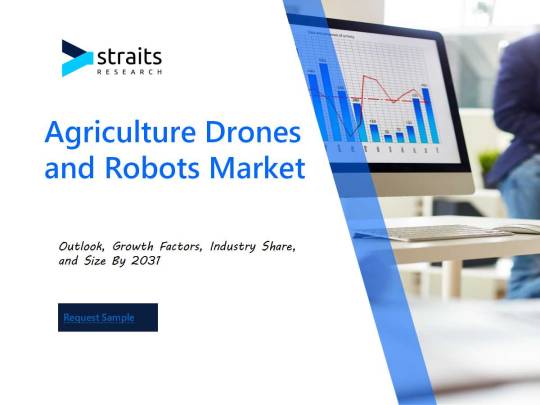
#Agriculture Drones and Robots Market#Agriculture Drones and Robots Market Share#Agriculture Drones and Robots Market Size#Agriculture Drones and Robots Market Research#Agriculture Drones and Robots Industry#What is Agriculture Drones and Robots?
0 notes
Text

Agriculture Autonomous Robots Market | BIS Research
The global agriculture autonomous robots market was estimated by BIS Research to be worth $828.4 million in 2022. Over the course of the forecast period, 2023–2028, it is anticipated to increase at a compound annual growth rate (CAGR) of 25.12%, reaching $3,136.7 million by 2028.
#Agriculture Autonomous Robots Market#Agriculture Autonomous Robots Industry#Agriculture Autonomous Robots Market CAGR#Agriculture Autonomous Robots Market Size#Agriculture Autonomous Robots Market Report#Agriculture Autonomous Robots Market Research#Agriculture Autonomous Robots Market Forecast#Agriculture#BIS Research
1 note
·
View note
Text
Milton Orr looked across the rolling hills in northeast Tennessee. “I remember when we had over 1,000 dairy farms in this county. Now we have less than 40,” Orr, an agriculture adviser for Greene County, Tennessee, told me with a tinge of sadness.
That was six years ago. Today, only 14 dairy farms remain in Greene County, and there are only 125 dairy farms in all of Tennessee. Across the country, the dairy industry is seeing the same trend: In 1970, more than 648,000 US dairy farms milked cattle. By 2022, only 24,470 dairy farms were in operation.
While the number of dairy farms has fallen, the average herd size—the number of cows per farm—has been rising. Today, more than 60 percent of all milk production occurs on farms with more than 2,500 cows.
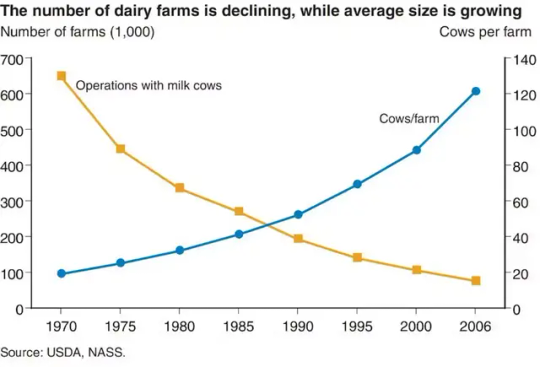
This massive consolidation in dairy farming has an impact on rural communities. It also makes it more difficult for consumers to know where their food comes from and how it’s produced.
As a dairy specialist at the University of Tennessee, I’m constantly asked: Why are dairies going out of business? Well, like our friends’ Facebook relationship status, it’s complicated.
The Problem with Pricing
The biggest complication is how dairy farmers are paid for the products they produce.
In 1937, the Federal Milk Marketing Orders, or FMMO, were established under the Agricultural Marketing Agreement Act. The purpose of these orders was to set a monthly, uniform minimum price for milk based on its end use and to ensure that farmers were paid accurately and in a timely manner.
Farmers were paid based on how the milk they harvested was used, and that’s still how it works today.
Does it become bottled milk? That’s Class 1 price. Yogurt? Class 2 price. Cheddar cheese? Class 3 price. Butter or powdered dry milk? Class 4. Traditionally, Class 1 receives the highest price.
There are 11 FMMOs that divide up the country. The Florida, Southeast, and Appalachian FMMOs focus heavily on Class 1, or bottled, milk. The other FMMOs, such as Upper Midwest and Pacific Northwest, have more manufactured products such as cheese and butter.
For the past several decades, farmers have generally received the minimum price. Improvements in milk quality, milk production, transportation, refrigeration, and processing all led to greater quantities of milk, greater shelf life, and greater access to products across the US. Growing supply reduced competition among processing plants and reduced overall prices.
Along with these improvements in production came increased costs of production, such as cattle feed, farm labor, veterinary care, fuel, and equipment costs.

Researchers at the University of Tennessee in 2022 compared the price received for milk across regions against the primary costs of production: feed and labor. The results show why farms are struggling.
From 2005 to 2020, milk sales income per 100 pounds of milk produced ranged from $11.54 to $29.80, with an average price of $18.57. For that same period, the total costs to produce 100 pounds of milk ranged from $11.27 to $43.88, with an average cost of $25.80.
On average, that meant a single cow that produced 24,000 pounds of milk brought in about $4,457. Yet, it cost $6,192 to produce that milk, meaning a loss for the dairy farmer.
More efficient farms are able to reduce their costs of production by improving cow health, reproductive performance, and feed-to-milk conversion ratios. Larger farms or groups of farmers—cooperatives such as Dairy Farmers of America—may also be able to take advantage of forward contracting on grain and future milk prices. Investments in precision technologies such as robotic milking systems, rotary parlors, and wearable health and reproductive technologies can help reduce labor costs across farms.
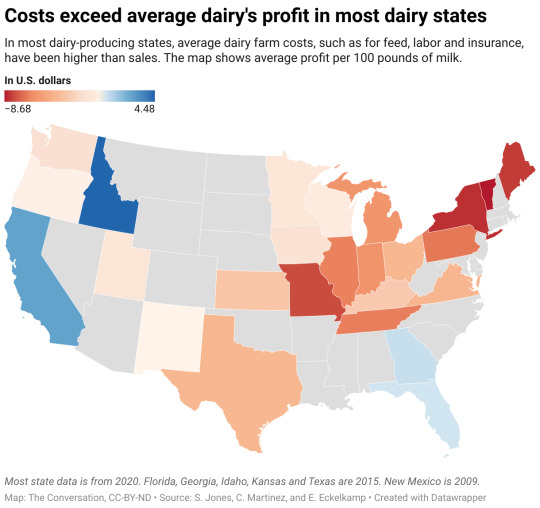
Regardless of size, surviving in the dairy industry takes passion, dedication, and careful business management.
Some regions have had greater losses than others, which largely ties back to how farmers are paid, meaning the classes of milk, and the rising costs of production in their area. There are some insurance and hedging programs that can help farmers offset high costs of production or unexpected drops in price. If farmers take advantage of them, data shows they can functions as a safety net, but they don’t fix the underlying problem of costs exceeding income.
Passing the Torch to Future Farmers
Why do some dairy farmers still persist, despite low milk prices and high costs of production?
For many farmers, the answer is because it is a family business and a part of their heritage. Ninety-seven percent of US dairy farms are family owned and operated.
Some have grown large to survive. For many others, transitioning to the next generation is a major hurdle.
The average age of all farmers in the 2022 Census of Agriculture was 58.1. Only 9 percent were considered “young farmers,” age 34 or younger. These trends are also reflected in the dairy world. Yet, only 53 percent of all producers said they were actively engaged in estate or succession planning, meaning they had at least identified a successor.
How to Help Family Dairy Farms Thrive
In theory, buying more dairy would drive up the market value of those products and influence the price producers receive for their milk. Society has actually done that. Dairy consumption has never been higher. But the way people consume dairy has changed.
Americans eat a lot, and I mean a lot, of cheese. We also consume a good amount of ice cream, yogurt, and butter, but not as much milk as we used to.
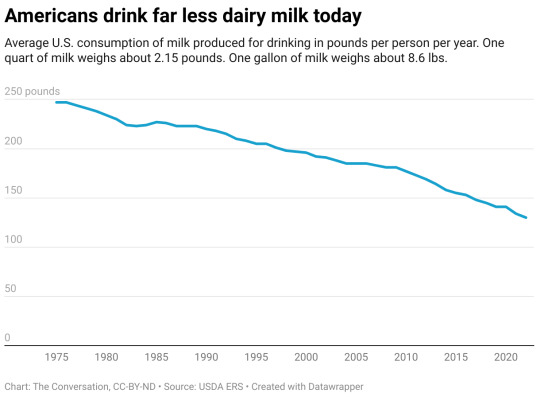
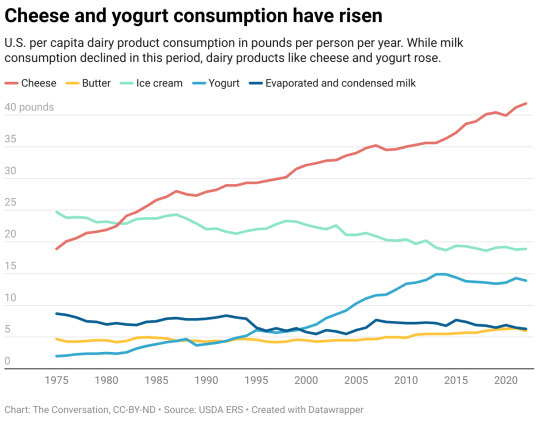
Does this mean the US should change the way milk is priced? Maybe.
The FMMO is currently undergoing reform, which may help stem the tide of dairy farmers exiting. The reform focuses on being more reflective of modern cows’ ability to produce greater fat and protein amounts; updating the cost support processors receive for cheese, butter, nonfat dry milk, and dried whey; and updating the way Class 1 is valued, among other changes. In theory, these changes would put milk pricing in line with the cost of production across the country.
The US Department of Agriculture is also providing support for four Dairy Business Innovation Initiatives to help dairy farmers find ways to keep their operations going for future generations through grants, research support, and technical assistance.
Another way to boost local dairies is to buy directly from a farmer. Value-added or farmstead dairy operations that make and sell milk and products such as cheese straight to customers have been growing. These operations come with financial risks for the farmer, however. Being responsible for milking, processing, and marketing your milk takes the already big job of milk production and adds two more jobs on top of it. And customers have to be financially able to pay a higher price for the product and be willing to travel to get it.
32 notes
·
View notes
Text
Just a friendly reminder, fellow Vault dwellers and Vault-Tec fans! You can ask any of us questions about our work, our lives and other topics! We’ll do our best to answer!
People you can ask questions to:
Branden Finnegan- Intern Researcher in the Vault Tec Agricultural Labs
Madeline Turner- Junior Designer of the Apparel Department
Leo Rojas- Intern Programmer in the Robotics and Electronics Department
Hank MacLean- Executive Assistant to Barb Howard
Ella Carlyle- Intern in the Psychological and Mental Sciences department-
Isabelle Ruiz- Junior Researcher in the Medical and Physical Fitness Department
Edward Holt - intern in the Geographical Survey department
Theo Dyers- intern in the Equipment and Financial Department
Ian Flint- Marketing and Art Advisor
Happy asking!
#fallout#fallout 2024#fallout show#vault dweller#barb howard#vault tec#fallout roleplay#hank mclean#in universe blog#vault boy
12 notes
·
View notes